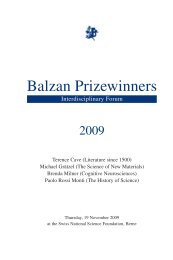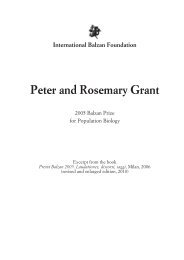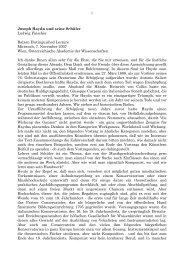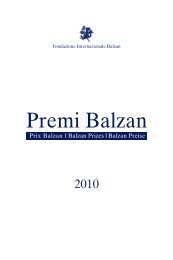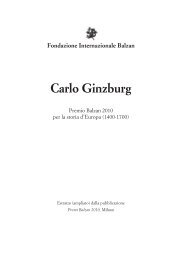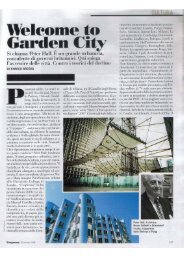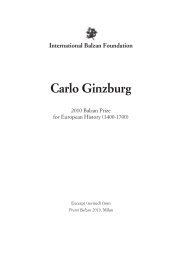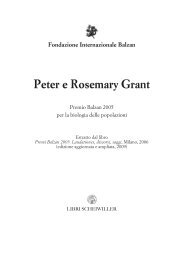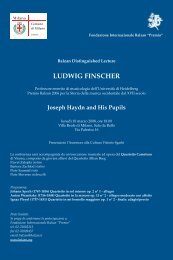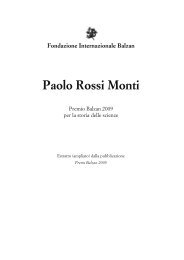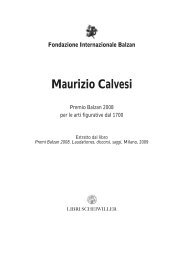Russell J. Hemley and Ho-kwang Mao
Russell J. Hemley and Ho-kwang Mao
Russell J. Hemley and Ho-kwang Mao
You also want an ePaper? Increase the reach of your titles
YUMPU automatically turns print PDFs into web optimized ePapers that Google loves.
2005 Balzan Prize<br />
tary <strong>and</strong> fusion applications. The new phase that appeared at 1.5 Mbar was thus<br />
found to be one in which the molecules strongly interact in an unexpected chargetransfer<br />
state, which generated considerable interest in theoretical physics <strong>and</strong><br />
spawned a large number of calculations, including those carried out with the<br />
Carnegie group [Phys. Rev. Lett. 67, 1138 (1991)]. Multiple invariant points (e.g.,<br />
critical or tricritical points) on the phase line were observed, all of which were<br />
unexpected. The surprising behavior of the ortho-to-para conversion rate was<br />
discovered in measurements carried out by college intern Eran Karmon, <strong>and</strong><br />
these results were explained theoretically in a paper co-authored by Mikhail<br />
Strzhemechny [Phys. Rev Lett. 85, 5595 (2000)]. Detailed measurements of the<br />
excitations in ortho-para mixed crystals showed such phenomena as Anderson<br />
localization [Phys. Rev. Lett. 74, 1379 (1995)]. Subsequent work has focused on<br />
the combined high-pressure/high temperature properties of hydrogen as they relate<br />
to conditions within the interiors of the large gaseous planets [Phys. Rev.<br />
Lett. 90, 175701 (2003)].<br />
These results have had important implications for condensed matter theory. The<br />
molecular bonding state persisted over a factor of ten higher in terms of pressure<br />
than the original predictions of Wigner <strong>and</strong> Huntington (which claimed a<br />
transition at 250 kbar). Moreover, in this higher pressure regime, a wealth of phenomena<br />
such as the 1.5 Mbar transition were unanticipated. The reason for this<br />
unexpected behavior was straightforward. Despite the putative simplicity of the<br />
hydrogen atom – with one electron <strong>and</strong> one proton – accurate theoretical calculations<br />
for an ensemble of hydrogen atoms pose a particular challenge to conventional<br />
condensed-matter theory. 22 This difficulty arises from the quantum<br />
character of the atomic nuclei (zero-point energy) associated with their low mass,<br />
which requires the proton <strong>and</strong> electron dynamics to be treated on the same theoretical<br />
footing. 23,24 The wealth of experimental data that emerged from these<br />
studies has therefore provided a rich test bed for the further development of<br />
bonding <strong>and</strong> electronic structure theory, which can then be applied to the rest<br />
of the Periodic Table. As these methods have been refined in order to underst<strong>and</strong><br />
these data, new predictions have emerged. For example, subsequent extensions<br />
<strong>and</strong> applications of these theoretical approaches calibrated against data<br />
from their lab have given rise to suggestions of remarkable new phenomena,<br />
such as new types of electron pairing interactions, high-T c superconductivity, <strong>and</strong><br />
a superfluid ground state in the high-pressure metallic phase. 25-27<br />
14



